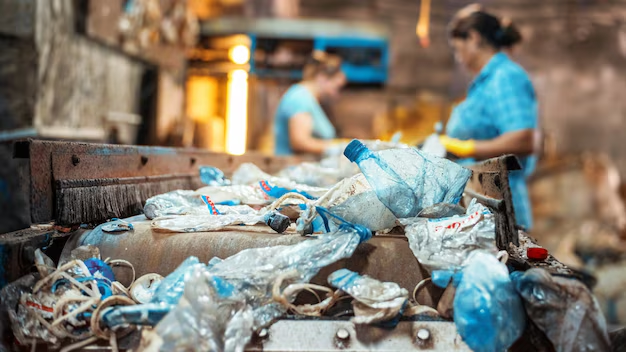20 Things That Cannot Be Recycled (And What to Do Instead)
We all want to do our part for the planet, and recycling seems like one of the easiest ways to make a difference. But here’s the truth—many of us are accidentally making recycling harder by tossing in things that don’t belong. It’s called “wishcycling”—that hopeful habit of throwing something in the bin and assuming it will get recycled. Unfortunately, this well-meaning mistake can contaminate entire batches of recycling, sending them straight to the landfill instead.
Did you know that greasy pizza boxes, plastic bags, and even coffee cups often can’t be recycled in your curbside bin? You’re not alone if you’ve been making these mistakes. Many of us grew up with confusing recycling rules that seem to change all the time. That’s why this guide exists—to clear up the confusion, backed by expert advice, real-life experiences, and solid research.
We’ll walk through 20 common items you might think are recyclable but actually aren’t. Plus, we’ll offer sustainable alternatives so you can reduce waste the right way. Let’s make recycling smarter, not harder—because every small change adds up to a healthier planet.

In This Article
- 1. Plastic Bags and Wraps
- 2. Styrofoam (Polystyrene)
- 3. Disposable Coffee Cups
- 4. Greasy Pizza Boxes
- 5. Shredded Paper
- 6. Bubble Wrap
- 7. Ceramics and Broken Glass
- 8. Receipts (Thermal Paper)
- 9. Disposable Razors
- 10. Toothpaste Tubes
- 11. Tangled Cords and Christmas Lights
- 12. Chip Bags
- 13. Plastic Straws
- 14. Makeup Wipes and Wet Wipes
- 15. Paper Towels and Napkins
- 16. Old CDs and DVDs
- 17. Rubber Items (Gloves, Bands, etc.)
- 18. Paint Cans
- 19. Hoses and Garden Equipment
- 20. Clothing and Textiles (Non-Organic Materials)
- Conclusion: How to Recycle Smarter
1. Plastic Bags and Wraps
Why They Can’t Be Recycled:
While plastic bags and wraps are ubiquitous in daily life, they pose significant challenges for recycling facilities. Their thin, flexible nature allows them to easily entangle in sorting machinery, leading to operational disruptions. According to the Washington Department of Ecology, approximately 20% of residents place recyclables in plastic bags before adding them to curbside bins, exacerbating contamination issues.
Alternative Solutions:
- Reusable Bags: Investing in durable, reusable shopping bags reduces reliance on single-use plastics.
- Store Drop-Offs: Many retailers offer collection bins for used plastic bags and wraps, ensuring proper recycling channels.
Case Study:
A study highlighted that plastic bag contamination reduces the efficiency of the recycling process when they’re improperly recycled.

2. Styrofoam (Polystyrene)
Why It Can’t Be Recycled:
Styrofoam, or expanded polystyrene foam, is prevalent in packaging and disposable food containers. Its lightweight composition and tendency to fragment make it a recycling nightmare. Once broken into smaller pieces, it becomes challenging to collect and can persist in the environment for centuries.
Alternative Solutions:
- Reusable Containers: Opt for durable, washable food containers made from glass or stainless steel.
- Compostable Options: Seek out products made from compostable materials that break down more efficiently.
Expert Insight:
The Environmental Protection Agency (EPA) states that expanded polystyrene is difficult to recycle due to its low density and contamination from food and drink residues. The agency highlights that EPS often ends up in landfills or the environment, where it breaks into microplastics, posing significant risks to marine and terrestrial ecosystems.
3. Disposable Coffee Cups
Why They Can’t Be Recycled:
Many disposable coffee cups are lined with a thin layer of plastic to prevent leaks, rendering them unsuitable for standard recycling processes. This combination of materials complicates recycling efforts.
Alternative Solutions:
- Reusable Mugs: Carrying a personal travel mug not only reduces waste but often earns discounts at coffee shops.
- In-House Dining: Choosing to enjoy your beverage in a café using reusable cups minimises disposable cup usage.
Statistical Insight:
According to a 2027 report, only 1 in 400 disposable coffee cups is recycled in the UK, highlighting the magnitude of the issue.
4. Greasy Pizza Boxes
Why They Can’t Be Recycled:
While cardboard is generally recyclable, pizza boxes soiled with grease and food residues contaminate the recycling stream. The oils interfere with the paper fibres during the recycling process, leading to quality issues.
Alternative Solutions:
- Composting: Greasy sections of pizza boxes are ideal for composting, breaking down naturally without harming the environment.
- Recycling Clean Portions: Tear off and recycle any uncontaminated parts of the box, disposing of the soiled sections appropriately.
Personal Story:
I once received a rejection notice from my recycling company due to a contaminated pizza box. Since then, I’ve been diligent about separating and composting the greasy parts to ensure proper recycling.
Learn More: Three Pillars of Sustainable Development?
5. Shredded Paper
Why It Can’t Be Recycled:
Shredded paper’s reduced size poses challenges for recycling facilities. The small fragments can clog machinery and are often too fine to be sorted effectively, leading to disposal in landfills.
Alternative Solutions:
- Composting: Shredded paper serves as excellent brown matter in compost bins, aiding in the decomposition process.
- Animal Bedding: Many animal shelters and pet owners welcome shredded paper for use as bedding material.
Industry Insight:
The American Forest & Paper Association (AF&PA) acknowledges that shredded paper is recyclable but advises caution due to its shorter fibers, which can disrupt recycling processes. While some curbside programs accept shredded paper if properly contained, many do not. AF&PA suggests checking local recycling guidelines and considering alternative uses such as composting or donating shredded paper to animal shelters for bedding.
6. Bubble Wrap
Why It Can’t Be Recycled:
Bubble wrap, that fun-to-pop packing material, isn’t as harmless as it seems. Much like plastic bags, when placed in curbside recycling bins, bubble wrap can wreak havoc on recycling machinery. Its flexible nature allows it to tangle and clog sorting equipment, leading to costly repairs and downtime for recycling facilities.
Alternative Solutions:
- Reuse: Before discarding, consider reusing bubble wrap for future packaging needs. It can also serve as insulation for potted plants during colder months or as protective cushioning for stored items.
- Designated Drop-off Locations: Many grocery stores and retail outlets offer collection bins specifically for plastic films, including bubble wrap. These programs ensure that the material is processed correctly without harming the recycling equipment.
7. Ceramics and Broken Glass
Why They Can’t Be Recycled:
Ceramics and certain types of glass, such as Pyrex or tempered glass, have different melting points compared to standard recyclable glass bottles and jars. Introducing these materials into the recycling stream can contaminate batches and produce structural weaknesses in new glass products.
Alternative Solutions:
- Repurpose Ceramics: Broken ceramic pieces can be transformed into mosaic art projects or garden decorations, or used as drainage at the bottom of plant pots.
- Specialised Recycling Facilities: Some communities offer drop-off locations for non-standard glass items. It’s advisable to check with local waste management services for guidance.
- Safe Disposal: If recycling isn’t an option, wrap broken glass securely in a newspaper or place it in a rigid container before disposing of it in the trash to prevent injury.

8. Receipts (Thermal Paper)
Why They Can’t Be Recycled:
Those seemingly harmless receipts we accumulate are often made from thermal paper, which contains chemicals like Bisphenol A (BPA) or Bisphenol S (BPS). These chemicals can be harmful if they enter the recycling stream, contaminating recycled paper products.
Alternative Solutions:
- Digital Receipts: Whenever possible, opt for electronic receipts. Many retailers offer to email or text receipts, reducing paper waste.
- Minimise Printing: Politely decline receipts for non-essential purchases, especially when a record isn’t necessary.
- Proper Disposal: Since thermal paper isn’t recyclable, it’s best to dispose of receipts in the regular trash.
9. Disposable Razors
Why They Can’t Be Recycled:
Disposable razors are a blend of plastic and metal, materials that are challenging to separate during the recycling process. This combination renders them unsuitable for standard recycling streams.
Alternative Solutions:
- Safety Razors: Investing in a quality safety razor with replaceable blades can significantly reduce waste. These razors are durable, and only the metal blades need periodic replacement.
- Razor Recycling Programs: Some manufacturers and organisations offer mail-in programs to recycle disposable razors. Participating in these initiatives ensures that the materials are processed responsibly.

10. Toothpaste Tubes
Why They Can’t Be Recycled:
Traditional toothpaste tubes are often made from a combination of plastic and aluminium layers, making them difficult to recycle through standard methods. This multi-material composition poses challenges in the separation and recycling process.
Alternative Solutions:
- Recyclable Packaging: Some brands have introduced toothpaste tubes made from recyclable materials. Switching to these products can make a positive impact.
- TerraCycle Programs: Organisations like TerraCycle offer specialised recycling programs for oral care products, including toothpaste tubes. Participating in these programs ensures that the materials are recycled appropriately.
- Toothpaste Tablets: An emerging alternative is toothpaste tablets, which come in recyclable or compostable packaging. These tablets dissolve in the mouth and serve the same purpose as traditional toothpaste.
11. Tangled Cords and Christmas Lights
Why They Can’t Be Recycled:
Tangled cords and Christmas lights, often referred to as “tanglers,” pose significant challenges in recycling facilities. Their flexible nature allows them to wrap around machinery, leading to equipment malfunctions and costly shutdowns. According to Rumpke, a waste and recycling company, these items can cause million-dollar facilities to halt operations, severely impacting the sustainable economy.
Alternative Solutions:
- Donation: If the lights are still functional, consider donating them to local charities, schools, or community centres. This extends their lifespan and benefits others.
- Recycling Programs: For non-working lights, specialised recycling programs are available. Organisations like GreenCitizen accept old or broken Christmas lights and ensure they are processed responsibly.
- Upcycling: Creative individuals can repurpose old lights for decorative projects, reducing waste and crafting unique home décor.
12. Chip Bags
Why They Can’t Be Recycled:
Chip bags are typically made from a combination of plastic and aluminium, creating a material known as metallised plastic film. This fusion of materials is challenging to separate during the recycling process, rendering them non-recyclable through standard municipal programs.
Alternative Solutions:
- TerraCycle Programs: Some companies partner with TerraCycle to offer recycling programs for hard-to-recycle items like chip bags. Consumers can collect and send their used bags to TerraCycle for proper processing.
- Product Choices: Opt for snacks packaged in recyclable materials or support brands committed to sustainable packaging practices.
- DIY Projects: Creative upcycling can transform chip bags into wallets, tote bags, or decorative items, giving them a second life.
13. Plastic Straws
Why They Can’t Be Recycled:
Plastic straws are small, lightweight, and often made from polypropylene, which is recyclable. However, their size and weight cause them to slip through sorting machinery at recycling facilities, leading to contamination of other recyclable materials.
Alternative Solutions:
- Reusable Straws: Investing in metal, bamboo, or silicone straws reduces reliance on single-use plastics. These options are durable, easy to clean, and environmentally friendly.
- No Straw Needed: For many beverages, straws are unnecessary. Choosing to go straw-free is a simple way to minimise plastic waste.
- Biodegradable Options: When straws are necessary, consider biodegradable alternatives made from materials like paper or plant-based plastics.
14. Makeup Wipes and Wet Wipes
Why They Can’t Be Recycled:
Makeup wipes and wet wipes are often composed of synthetic fibres and are treated with various chemicals. These materials do not break down in recycling systems and can cause blockages in wastewater treatment facilities if flushed.
Alternative Solutions:
- Reusable Cloths: Switching to washable, reusable makeup remover cloths or pads made from natural fibres reduces waste and is gentle on the skin.
- DIY Solutions: Creating homemade cleansing solutions with reusable cloths allows for customisation and eliminates the need for disposable wipes.
- Eco-Friendly Brands: Some companies offer biodegradable wipes made from sustainable materials, providing a disposable option with less environmental impact.
Learn More: Can You Recycle Plant Pots?
15. Paper Towels and Napkins
Why They Can’t Be Recycled:
Paper towels and napkins are often contaminated with food residues, grease, or cleaning chemicals, making them unsuitable for recycling. Additionally, they are typically made from low-grade paper fibres that have already been recycled multiple times, reducing their recyclability.
Alternative Solutions:
- Composting: Used paper towels and napkins can be composted, especially if they are free from harsh chemicals. Composting transforms them into valuable organic matter for gardens.
- Reusable Alternatives: Utilising cloth napkins and towels that can be washed and reused significantly cuts down on paper waste. This practice is both economical and environmentally friendly.
- Mindful Consumption: Reducing the use of disposable paper products by adopting habits like air-drying hands or using designated cloths for cleaning tasks contributes to waste minimisation.
16. Old CDs and DVDs
Why They Can’t Be Recycled:
Old CDs and DVDs are primarily made from polycarbonate plastic combined with other materials like aluminium coatings and dyes. This composition makes them challenging to process in standard recycling facilities. Moreover, when discarded improperly, these discs can take an astonishing 1 million years to decompose in landfills, occupying valuable space and wasting resources.
Alternative Solutions:
- Specialised Recycling Programs: Several organisations specialise in recycling CDs and DVDs. For instance, the CD Recycling Centre of America accepts unwanted discs and ensures they are processed responsibly. Similarly, companies like GreenDisk offer mail-in services for recycling electronic media, ensuring that 99% of the materials collected are reused or recycled.
- Donation or Resale: If your discs are in good condition, consider donating or selling them. Secondhand stores and online platforms often accept used media, giving them a second life and keeping them out of landfills.
- Creative Repurposing: For crafty individuals, old CDs and DVDs can be transformed into art projects or functional items, such as coasters or decorative mosaics. This not only reduces waste but also adds a personal touch to your space.
17. Rubber Items (Gloves, Bands, etc.)
Why They Can’t Be Recycled:
Rubber items, including gloves and bands, pose a recycling challenge due to their durable nature and the complexity of processing rubber materials. Consequently, most curbside recycling programs do not accept them.
Alternative Solutions:
- Upcycling: Many manufacturers are exploring ways to repurpose rubber waste. For example, non-conforming rubber compounds can be remixed and reused in production, reducing the need for new raw materials.
- Creative Reuse: At home, rubber items can be repurposed for various uses. Old rubber gloves can become garden ties, and rubber bands can be used for organising items. This approach extends the life of the material and minimises waste.
18. Paint Cans
Why They Can’t Be Recycled:
Paint cans, especially those with residual paint, are problematic for recycling facilities. The leftover paint can contaminate recycling streams, and the cans themselves may be classified as hazardous waste.
Alternative Solutions:
- Proper Disposal: Many communities offer hazardous waste collection events or facilities where residents can safely dispose of paint cans. This ensures that both the paint and the containers are handled in an environmentally responsible manner.
- Paint Reuse Programs: Some organisations collect leftover paint, remix it, and offer it at a reduced cost or donate it to community projects. Participating in such programs can prevent waste and benefit others.

19. Hoses and Garden Equipment
Why They Can’t Be Recycled:
Items like garden hoses and certain equipment can entangle machinery at recycling facilities, leading to operational issues and potential hazards for workers. Consequently, they are typically not accepted in curbside recycling programs.
Alternative Solutions:
- Donation: If the items are still functional, consider donating them to community gardens, schools, or local organisations. This extends their usability and supports community initiatives.
- Repurposing: Old hoses can be creatively reused in various ways, such as being cut into pieces to create grips for tool handles or used as protective covers for sharp edges. This not only reduces waste but also provides practical solutions around the home or garden.
20. Clothing and Textiles (Non-Organic Materials)
Why They Can’t Be Recycled:
Clothing and textiles made from synthetic fibres, such as polyester or nylon, present significant recycling challenges. Globally, less than 0.5% of post-consumer textile waste is recycled, with the majority ending up in landfills or being incinerated. The fast fashion industry exacerbates this issue, producing over 92 million tonnes of textile waste annually.
Alternative Solutions:
- Donation: Gently used clothing can be donated to charities, thrift stores, or shelters, providing affordable options for others and extending the life of the garments.
- Textile Recycling Programs: Some retailers and organisations offer textile recycling services, where old clothes are collected and processed into new materials or products. This helps divert waste from landfills and promotes circular fashion practices.
- Upcycling: Transforming old textiles into new items, such as tote bags, quilts, or cleaning rags, is a creative way to reduce waste. This approach not only minimises environmental impact but also fosters creativity and resourcefulness.
Learn More: 15 Recycling Myths and Facts
Conclusion: How to Recycle Smarter
Understanding what can and cannot be recycled is crucial for reducing waste and protecting the environment. By taking small steps—such as using reusable alternatives and properly disposing of non-recyclable items—we can all contribute to a cleaner planet.
Actionable Steps:
- Check local recycling guidelines – Every city has different rules.
- Invest in reusable alternatives – Reduce reliance on disposables.
- Educate others – Share knowledge with family and friends.
- Find specialised recycling programs – Some items (like electronics) require special handling.
Recycling isn’t just about throwing items into a blue bin—it’s about making mindful choices. Together, we can create a more sustainable future.







